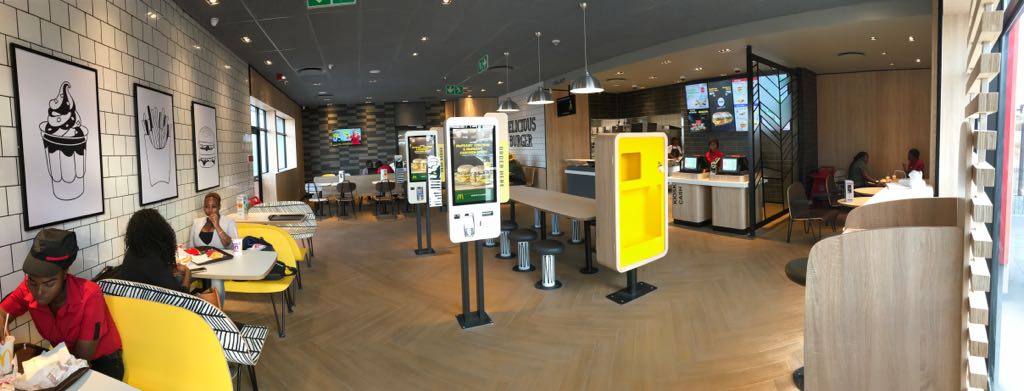
By Moving Tactics - 12.4.2019
Quick-service restaurants (QSRs), have been at the forefront of adopting new digital technologies to interact with their customers, improve their service offering and leverage the customer’s dining experience. New technologies are enabling customers to customise their orders, self-order, pay in a faster and more effective way, and be entertained and informed whilst waiting for their food to be packaged/served.
McDonald’s is one such QSR spearheading a technology turnaround across their business by globally aligning their systems and leading the way in which technology is used to get closer to their customers. “Traditional information technology has broadened to include digital technology, customer technology and supply chain technology; and their adoption and integration has evolved the business,” says Nishal Ragoobeer, IT Director of McDonald’s South Africa.

Here are some simple ways to update and refresh your QSR digital signage and technology systems.
System-on-Chip (SOC) Technology
One technology basic is that the digital signage network employ System-on-Chip (SOC) technology. This facilitates the use of media players built into the screens, which leads to less downtime and technical issues, resulting in a more streamlined installation that saves on costs. SOC is also an integrated system that enables the screen to link into point-of-sale pricing, which in turn results in automatic updates to digital menu boards.
Day Parting
Day parting is when the time of day influences the content that is posted onto promotional screens and digital menu boards. “Famous Brands has successfully employed this strategy, where breakfast or lunch options are specifically scheduled as screen takeovers at those times of day. It provides restaurateurs with a lot more flexibility and allows for speed to market,” says Chris Day, Managing Director at digital signage solution provider Moving Tactics.
Weather-Based Content
Many external aspects determine people’s buying habits, from time of day to a QSR’s specific location or weather condition. Bespoke content based on location data is proving more popular and can be built into the planned marketing strategy many months ahead of time. This technology enables restaurants to upsell coffee with their meals on a cold day rather than cold drinks, automatically.
Digital Drive-Thru’s
QSRs are relying more digital drive-thru’s to effectively promote day parting and weather based content as well as integrate with the offers and products being promoted in-store. According to Daniel Padiachy, Chief Marketing, Communication and IT Officer at McDonald’s SA, looking to the future, McDonald’s is excited to investigate how artificial intelligence could change the drive-through experience. “With AI-powered number plate or facial recognition, we could recognise returning customers and offer them their ‘usual’ to cut the fuss out of ordering,” says Padiachy.
In-Store Music
Digital audio and music systems play a huge role in enhancing the in-restaurant dining experience and save franchisees hours of their time selecting, downloading, licensing and maintaining a music selection. Playlists can now be created and updated on a regular basis. Another benefit is that the type of music being played can be controlled and tailored specifically to the restaurant’s audience.
In-Restaurant Wifi
Offering wifi in QSR establishments is one way of increasing the customer’s dining and/or ordering experience. It is an opportunity to get to know your customer, cut down on perceived waiting times, increase sales by sending personalised offers and reward brand loyalty. It can also be a way for your customers to promote your brand through social media sharing.
Internal Staff Training
An integrated digital signage system can be used to provide staff in a region, nationally or internationally with training via the in-restaurant digital screens or deliver other company information.
“With the Quick-Service Restaurant business being so highly competitive, players need to employ the latest technologies. I would encourage franchisees to look at what is being used in the industry and implement those innovative digital signage solutions that will improve the way they engage with their customers, promote their products and increase their bottom line,” says Day.
Moving Tactics is a leading South African digital signage solutions company that develops customised digital signage technologies and is constantly creating innovative communication solutions.
Are you an industry thought leader with a point of view on restaurant technology that you would like to share with our readers? If so, we invite you to review our editorial guidelines and submit your article for publishing consideration.

